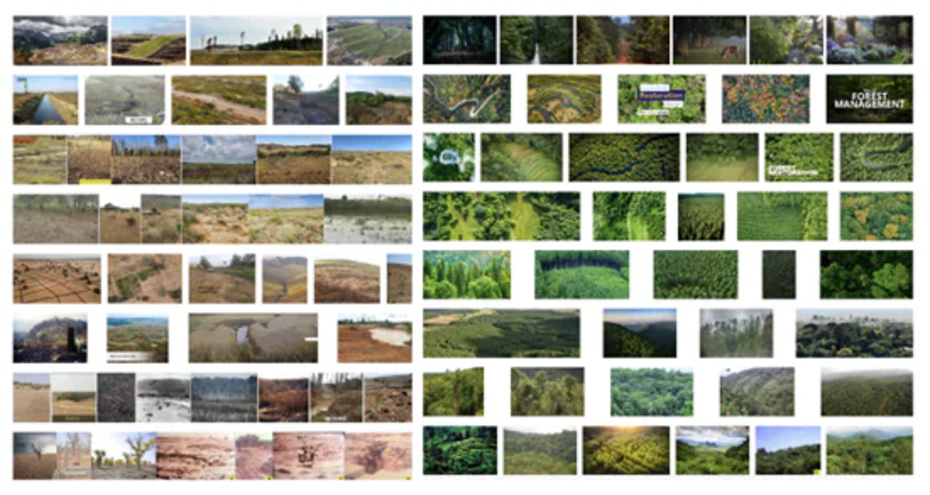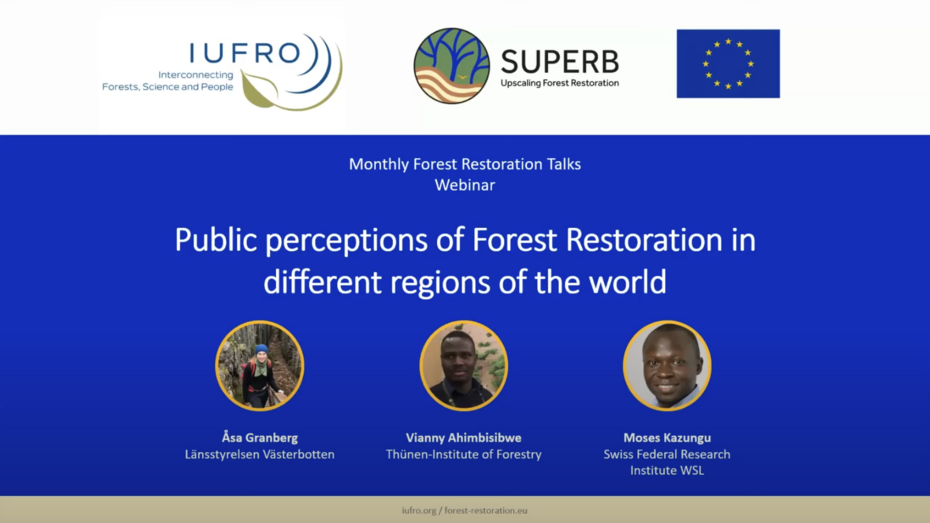
3.1 Stakeholder mapping, online debate mapping, perception

Learning about societal perceptions
Societal perceptions refer to how people view forests in general, their perceptions of forest restoration efforts in their areas, their views on the impacts of restoration on the benefits they obtain from forests, and their attitudes towards supporting restoration, including their preferred modes of engagement. Understanding societal perspectives enables you to align restoration initiatives more closely with local expectations, ensuring that societal interests are meaningfully integrated into both the design and implementation of restoration programmes.
Several key steps are critical for learning about societal perceptions. The first step involves understanding the socio-economic context of the target areas. This requires identifying key informants – individuals who possess detailed knowledge of how forests are used within their communities. Key informants should be drawn from all sectors of society, including women, men, students, teachers, recreational users, hunters, environmentalists, researchers, and local policy actors. These informants are interviewed to gather insights into community perspectives and forest-use practices.
Following this, the design of surveys – informed by key informant interviews – can take place to learn about broader societal perceptions of forests and forest restoration. This stage may involve household interviews or online surveys. The findings help you reveal overarching societal attitudes and provide a basis for identifying important social segments, such as different age groups, professional categories, social characteristics, frequency of forest visits, modes of access, and proximity to forests. Understanding these dimensions is crucial for tailoring restoration programmes to local contexts and ensuring their relevance and effectiveness.
Stakeholder Mapping: Identifying stakeholders through snowballing and surveying
Stakeholder engagement requires careful mapping of stakeholders and inclusion of diverse stakeholder groups, from formal interest groups at European and national level to the general public and local communities. It is important for you to tailor the engagement strategies to the different stakeholder groups, from, e.g., large-scale surveys to capture the public’s view to local workshops which enable mutual learning.
Whether you want stakeholders to support your restoration initiative, to contribute to a discussion or to an event, or to include them in local activities: the effective design and implementation of any forest restoration initiative necessitates a clear mapping of key stakeholders, as well as an understanding of both stakeholder and societal attitudes towards restoration and the resulting impacts on the benefits (services) that people derive.
The goal is to identify relevant stakeholders for your work through leveraging expertise of your existing contacts.
Whether you do this as an individual or as part of a group or organisation: you want to understand who you could engage with and reach out to.
The first step is ‘stakeholder mapping’. This involves deciding criteria for who you are mapping (ensuring you think beyond ‘the usual suspects’), then making a list of all relevant people and groups that meet these criteria. You can start the mapping with your existing network of stakeholders and categorise them based on (e.g.) their influence, their profession or their likely engagement. Do think carefully about which stakeholders and actors might have a stake in any decisions, who might be affected and who would want to be involved in any decision process. For policy purposes a focus on influence mapping might be useful as also small minorities can have a big political power if they are very vocal.
Stakeholder mapping: Identifying stakeholders through web and social media
By mapping online engagement, you may discover groups who are unexpected or overlooked. This method may give a different picture of stakeholders compared to starting with your existing contacts.
This process involves two parts/steps: 1) finding online materials such as search engine results and social media posts related to the forest site you are concerned with, and 2) identifying potential stakeholders from these materials.
Related resources
What can Google Image search results tell us about human-forest relationships?
EFI and KCL explored how Google Images reflect human-forest relationships. Using 40 keywords, students created Plant Forward, a visual archive of 1,200 images showing different forest lifecycle stages. Results reveal diverse portrayals of people interacting with forests—from regeneration to deforestation—highlighting the social and commercial dimensions of forest imagery.
Public perceptions of Forest Landscape Restoration across the world
In this SUPERB/IUFRO Forest Restoration Talk, our speakers into public perceptions of forest restoration across Europe and Ethiopia, featuring insights from social science research. Experts from Sweden, Germany and Ethiopia discuss stakeholder engagement, governance, and communication strategies to align restoration goals with societal values and biodiversity needs.
Exploring societal perceptions of forests, ecosystem benefits and restoration
This study examines how people in different European regions perceive and engage with forests and restoration. Through interviews in Sweden, Scotland, Germany, Serbia/Croatia and Spain, it reveals contrasting views of forests and shows that past restoration focused mainly on biodiversity and hazard mitigation, overlooking other benefits. The findings highlight the need for inclusive restoration that reflects community values and societal attitudes.






